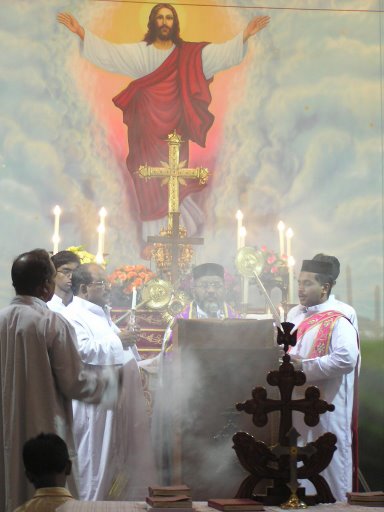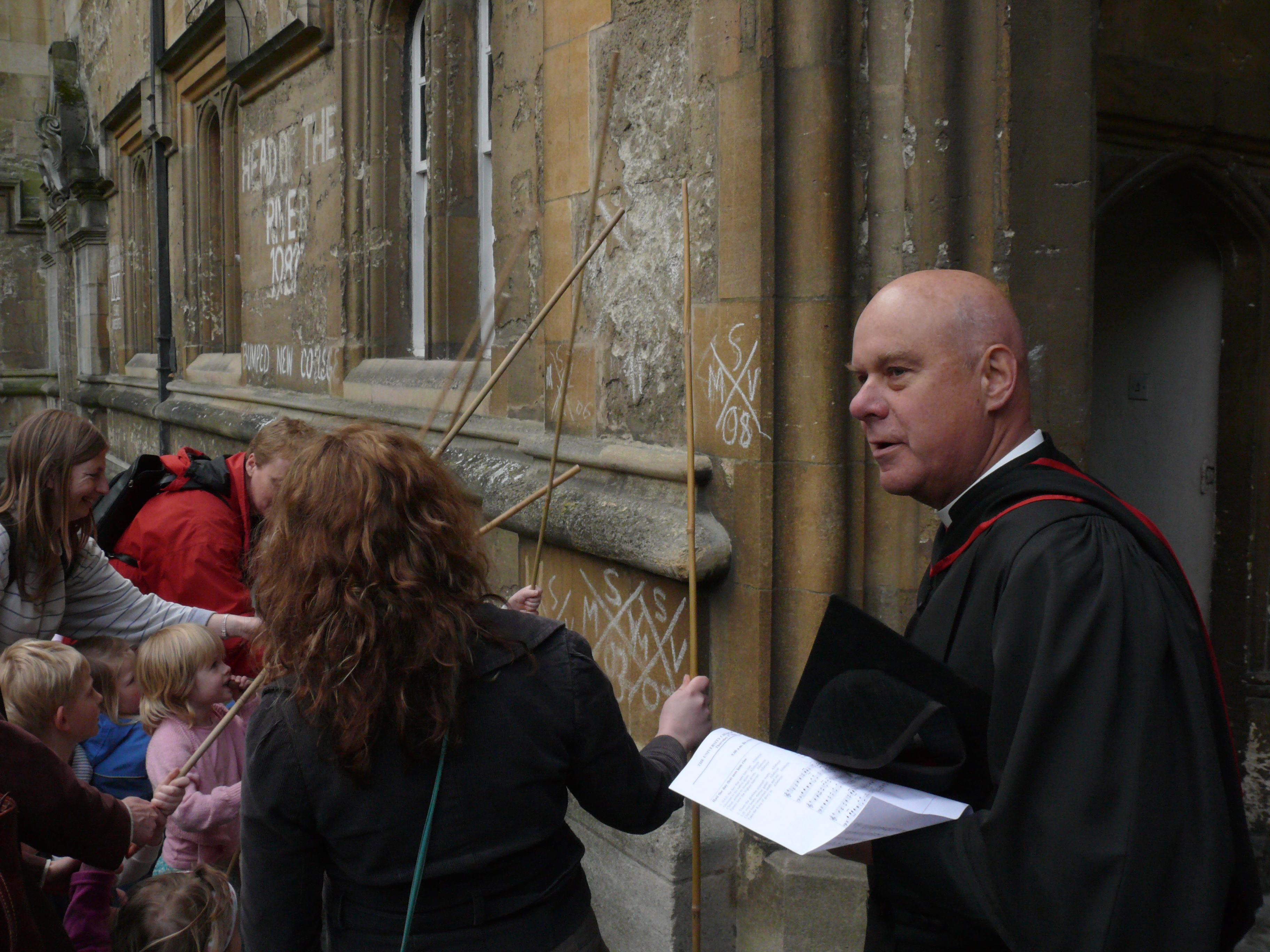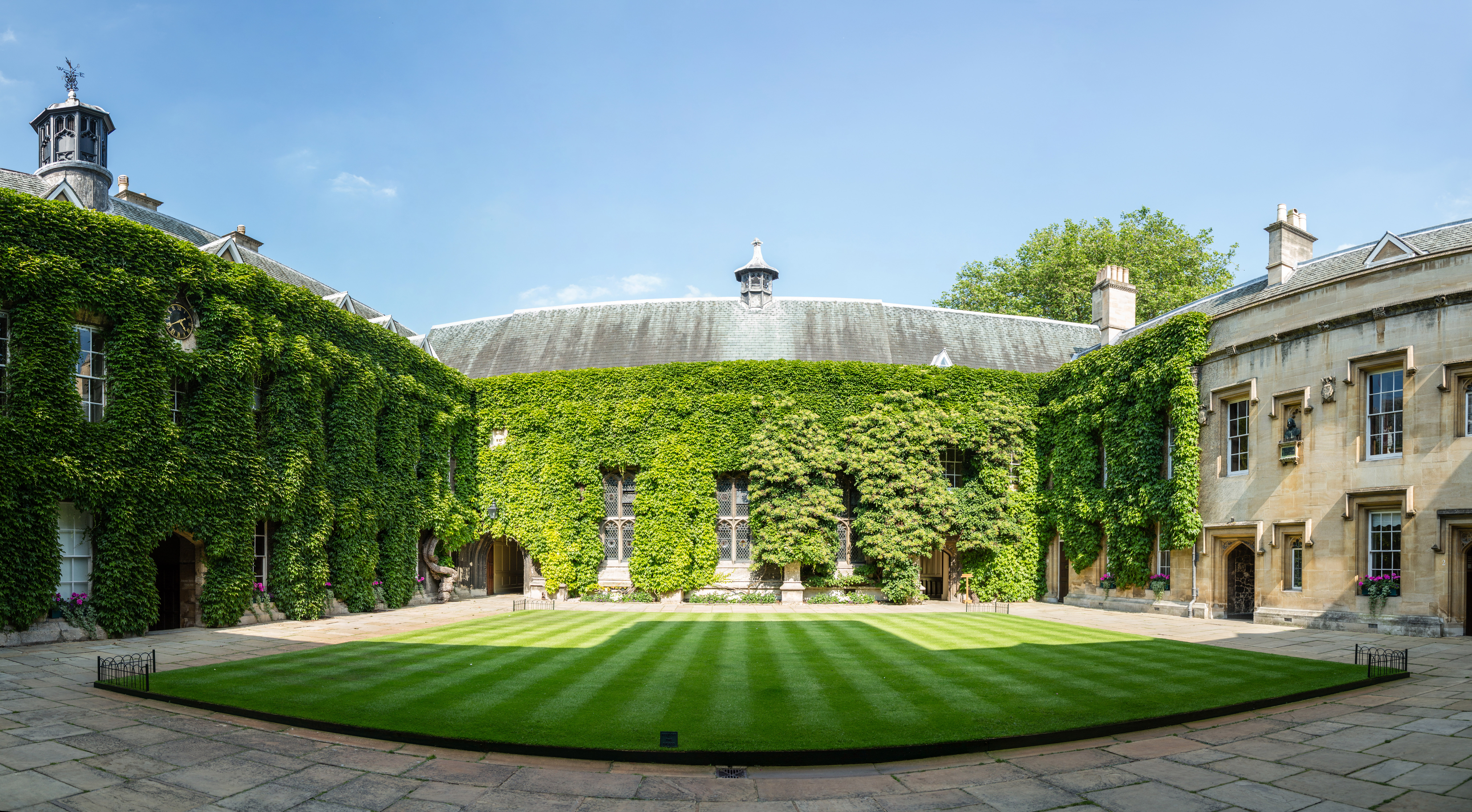|
St Michael At The Northgate
__NOTOC__ St Michael at the North Gate is a church in Cornmarket Street, at the junction with Ship Street, in central Oxford, England. The name derives from the church's location on the site of the north gate of Oxford when it was surrounded by a city wall. Since 1971, it has served as the ceremonial City Church of Oxford, and has joined the parishes of the two earlier City Churches with its own. History Originally built around 1000–1050, with the tower from 1040 still in existence, the church is Oxford's oldest building. It was constructed of Coral Rag. The church tower is Anglo-Saxon. The architect John Plowman rebuilt the north aisle and transept in 1833. The Oxford Martyrs were imprisoned in the Bocardo Prison by the church before they were burnt at the stake in what is now Broad Street nearby, then immediately outside the city walls, in 1555 and 1556. Their cell door can be seen on display in the church's tower. St Michael at the North Gate is the current City Ch ... [...More Info...] [...Related Items...] OR: [Wikipedia] [Google] [Baidu] |
Anglo-Saxon Architecture
Anglo-Saxon architecture was a period in the history of architecture in England from the mid-5th century until the Norman Conquest of 1066. Anglo-Saxon secular buildings in Britain were generally simple, constructed mainly using timber with thatch for roofing. No universally accepted example survives above ground. Generally preferring not to settle within the old Roman cities, the Anglo-Saxons built small towns near their centres of agriculture, at fords in rivers or sited to serve as ports. In each town, a main hall was in the centre, provided with a central hearth. There are many remains of Anglo-Saxon church architecture. At least fifty churches are of Anglo-Saxon origin with major Anglo-Saxon architectural features, with many more claiming to be, although in some cases the Anglo-Saxon part is small and much-altered. It is often impossible to reliably distinguish between pre- and post-Conquest 11th century work in buildings where most parts are later additions or alterations. ... [...More Info...] [...Related Items...] OR: [Wikipedia] [Google] [Baidu] |
Pevsner Architectural Guides
The Pevsner Architectural Guides are a series of guide books to the architecture of Great Britain and Ireland. Begun in the 1940s by the art historian Sir Nikolaus Pevsner, the 46 volumes of the original Buildings of England series were published between 1951 and 1974. The series was then extended to Scotland, Wales and Ireland in the late 1970s. Most of the English volumes have had subsequent revised and expanded editions, chiefly by other authors. The final Scottish volume, ''Lanarkshire and Renfrewshire'', was published in autumn 2016. This completed the series' coverage of Great Britain, in the 65th anniversary year of its inception. The Irish series remains incomplete. Origin and research methods After moving to the United Kingdom from his native Germany as a refugee in the 1930s, Nikolaus Pevsner found that the study of architectural history had little status in academic circles, and that the amount of information available, especially to travellers wanting to inform themselv ... [...More Info...] [...Related Items...] OR: [Wikipedia] [Google] [Baidu] |
Margaret Murray
Margaret Alice Murray (13 July 1863 – 13 November 1963) was an Anglo-Indian Egyptology, Egyptologist, archaeology, archaeologist, anthropology, anthropologist, historian, and folkloristics, folklorist. The first woman to be appointed as a lecturer in archaeology in the United Kingdom, she worked at University College London (UCL) from 1898 to 1935. She served as President of the Folklore Society from 1953 to 1955, and published widely over the course of her career. Born to a wealthy middle-class English family in Kolkata, Calcutta, British India, Murray divided her youth between India, Britain, and Germany, training as both a nurse and a social worker. Moving to London, in 1894 she began studying Egyptology at UCL, developing a friendship with department head Flinders Petrie, who encouraged her early academic publications and appointed her Junior Professor in 1898. In 1902–03 she took part in Petrie's Excavation (archaeology), excavations at Abydos, Egypt, there discoverin ... [...More Info...] [...Related Items...] OR: [Wikipedia] [Google] [Baidu] |
Ascension Day
The Solemnity of the Ascension of Jesus Christ, also called Ascension Day, Ascension Thursday, or sometimes Holy Thursday, commemorates the Christian belief of the bodily Ascension of Jesus into heaven. It is one of the ecumenical (i.e., shared by multiple denominations) feasts of Christian churches, ranking with the feasts of the Passion and Pentecost. Following the account of that the risen Jesus appeared for 40 days prior to his Ascension, Ascension Day is traditionally celebrated on a Thursday, the fortieth day of Easter; although some Christian denominations have moved the observance to the following Sunday. The day of observance varies by ecclesiastical province in many Christian denominations, as with Methodists and Catholics, for example. History The observance of this feast is of great antiquity. Eusebius seems to hint at the celebration of it in the 4th century. At the beginning of the 5th century, Augustine of Hippo says that it is of Apostolic origin, and he speaks o ... [...More Info...] [...Related Items...] OR: [Wikipedia] [Google] [Baidu] |
Beating The Bounds
Beating the bounds or perambulating the bounds is an ancient custom still observed in parts of England, Wales, and the New England region of the United States, which traditionally involved swatting local landmarks with branches to maintain a shared mental map of parish boundaries, usually every seven years. These ceremonial events occur on what are sometimes called gangdays; the custom of going a-ganging was kept before the Norman Conquest. During the event, a group of prominent citizens from the community, which can be an English church parish, New England town, or other civil division, will walk the geographic boundaries of their locality for the purpose of maintaining the memory of the precise location of these boundaries. While modern surveying techniques have rendered these ceremonial walks largely irrelevant, the practice remains as an important local civic ceremony or legal requirement for civic leaders. Ceremony In former times when maps were rare, it was usual to make a ... [...More Info...] [...Related Items...] OR: [Wikipedia] [Google] [Baidu] |
Lincoln College, Oxford
Lincoln College (formally, The College of the Blessed Mary and All Saints, Lincoln) is one of the constituent colleges of the University of Oxford, situated on Turl Street in central Oxford. Lincoln was founded in 1427 by Richard Fleming, the then Bishop of Lincoln. Notable alumni include the physician John Radcliffe, the founder of Methodism John Wesley, antibiotics scientists Howard Florey, Edward Abraham, and Norman Heatley, writers Theodor Seuss Geisel (Dr. Seuss) and David John Moore Cornwell (John le Carré), the journalist Rachel Maddow, and the current British Prime Minister Rishi Sunak. Mensa was founded at Lincoln College in 1946. Lincoln College has one of the oldest working medieval kitchens in the UK. History Founding Richard Fleming, the then Bishop of Lincoln, founded the College in order to combat the Lollard teachings of John Wyclif. He intended it to be "a little college of true students of theology who would defend the mysteries of Scripture against t ... [...More Info...] [...Related Items...] OR: [Wikipedia] [Google] [Baidu] |
High Street, Oxford
The High Street in Oxford, England, known locally as the High, runs between Carfax, generally seen as the centre of the city, and Magdalen Bridge to the east. Overview The street has been described by Nikolaus Pevsner as "''one of the world's great streets''". It forms a gentle curve and is the subject of many prints, paintings, photographs, etc. The looking west towards Carfax with University College on the left and The Queen's College on the right is an especially popular view. There are many historical buildings on the street, including the University of Oxford buildings and colleges. Locally the street is often known as "The High". Major buildings To the north are (west to east): Lincoln College (main entrance on Turl Street, including All Saints Church, now Lincoln College's library.), Brasenose College (main entrance in Radcliffe Square), St Mary's (the University Church), All Souls College, The Queen's College, St Edmund Hall (main entrance in Queen's Lane) and M ... [...More Info...] [...Related Items...] OR: [Wikipedia] [Google] [Baidu] |
All Saints Church, Oxford
All Saints Church is a former church on the north side of the High Street in central Oxford, England, on the corner of Turl Street. It is now the library of Lincoln College. This former church is Grade I listed. History The original All Saints Church was founded in 1122 on this site. However, on 8 March 1700, the spire of the church collapsed, destroying most of the building. There was an appeal for funds and the current building, seating 350, was completed in 1720. The building was designed by Henry Aldrich, the Dean of Christ Church. Nicholas Hawksmoor is thought to be responsible for the tower and spire. Four of the original bells survived the collapse. The repairs to the church were very expensive and donations were received from most of the Oxford colleges and also Queen Anne. In 1896, when St Martin's Church at Carfax was demolished (except for its tower), All Saints became the official City Church, where the Mayor and Corporation were expected to worship. In 1946 a ... [...More Info...] [...Related Items...] OR: [Wikipedia] [Google] [Baidu] |
Carfax, Oxford
Carfax is the junction of St Aldate's (south), Cornmarket Street (north), Queen Street (west) and the High Street (east) in Oxford, England. It is considered to be the centre of the city. The name "Carfax" derives from the Latin ''quadrifurcus'' via the French ''carrefour'', both of which mean "crossroads". The Carfax Tower, also known as St. Martin's Tower (it is the remaining part of what was the City Church of St. Martin of Tours) is a prominent landmark and provides a look-out over the town. Tower St Martin's Tower, popularly called "Carfax Tower", is on the northwest corner of Carfax. It is all that remains of the 12th-century St Martin's Church and is now owned by Oxford City Council. It was the official City Church of Oxford, where the Mayor and Corporation were expected to worship, between about 1122 and 1896, when the main part of the church was demolished to make more room for road traffic and All Saints' Church in the High Street became the City Church for 75 yea ... [...More Info...] [...Related Items...] OR: [Wikipedia] [Google] [Baidu] |
St Martin's Church, Oxford
Carfax is the junction of St Aldate's (south), Cornmarket Street (north), Queen Street (west) and the High Street (east) in Oxford, England. It is considered to be the centre of the city. The name "Carfax" derives from the Latin ''quadrifurcus'' via the French ''carrefour'', both of which mean "crossroads". The Carfax Tower, also known as St. Martin's Tower (it is the remaining part of what was the City Church of St. Martin of Tours) is a prominent landmark and provides a look-out over the town. Tower St Martin's Tower, popularly called "Carfax Tower", is on the northwest corner of Carfax. It is all that remains of the 12th-century St Martin's Church and is now owned by Oxford City Council. It was the official City Church of Oxford, where the Mayor and Corporation were expected to worship, between about 1122 and 1896, when the main part of the church was demolished to make more room for road traffic and All Saints' Church in the High Street became the City Church for 75 yea ... [...More Info...] [...Related Items...] OR: [Wikipedia] [Google] [Baidu] |
Broad Street, Oxford
Broad Street is a wide street in central Oxford, England, just north of the former city wall. The street is known for its bookshops, including the original Blackwell's bookshop at number 50, located here due to the University of Oxford. Among residents, the street is traditionally known as The Broad. Location In Broad Street are Balliol College, Trinity College, Exeter College (front entrance in the adjoining Turl Street). The Museum of the History of Science (in the original Ashmolean Museum building), the Clarendon Building, the Sheldonian Theatre and the Weston Library (renamed in 2015, part of the Bodleian Library, the main University library in Oxford) are important historical Oxford University buildings at the eastern end of the street. These buildings form the ''de facto'' centre of the University, since most academic buildings in the centre of Oxford are owned by individual (and autonomous) colleges rather than the University itself. To the west the street becomes G ... [...More Info...] [...Related Items...] OR: [Wikipedia] [Google] [Baidu] |






_View_of_High_Street_Oxford_SFMOMA.jpg)



